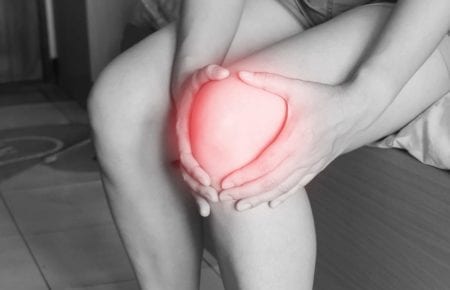 Exercises for aching knees are an excellent support for the treatment of ailments arising from injuries, overloads or knee diseases. Properly selected physical activity helps to restore proper mobility as well as the stability of knee joints. In the treatment of pain in the knee, occurring both during bending during walking and in a state of rest also help ointments, pills and wraps.
Exercises for aching knees are an excellent support for the treatment of ailments arising from injuries, overloads or knee diseases. Properly selected physical activity helps to restore proper mobility as well as the stability of knee joints. In the treatment of pain in the knee, occurring both during bending during walking and in a state of rest also help ointments, pills and wraps.
What does knee pain mean? What are the causes of knee pain?
The knee joint is an extremely complicated construction. It consists of two bones (femur and tibia), kneecap, two meniscus, external and internal ligaments. It is a hinge joint that performs bending and straightening movements, with small rotational movements taking place in the bending position.
The knee joint is particularly vulnerable to overloading and damage. Painful knee injury is a particularly common problem in the group of people doing sports. They most often report symptoms such as pain in the knee when bending or pain under the knee.
Knee pain can be associated with:
- stretching or rupture of the ligament,
- inflammation,
- damage to the joint capsule, e.g. dislocation or sprains,
- straining or damaging muscles around the joint,
- rheumatic diseases,
- degenerative changes.
Regardless of whether we are dealing with continuous pain or if we only have knee pain after running or knee pain while crouching, the discomfort can not be underestimated. As soon as disturbing symptoms appear, such as pain, but also redness, swelling of the knee, increased warmth, lack of stabilization or problems with walking, it is necessary to report to the doctor.
How to strengthen your knees? What are the best knee exercises?
With any problems with the knees, manifested by pain in the knees or stabbing in the knee, the most important are stabilizing exercises that will make the joint more secure and less susceptible to damage. These exercises involve strengthening the muscles around your knee.
Exercise 1 – lifting a straight leg
Exercise can be performed lying on your back or on the edge of the chair. It consists in lifting the leg with a straight leg stiffened in the knee. The movement therefore takes place only in the hip. To add a small resistance, you can place a weight on the ankle. There are 12 repetitions for one leg.
Exercise 2 – straightening the knee
Performed in a sitting position on a mat with straight legs stretched out ahead. A curled towel, a small blanket or a cushion is placed under the knee of the working leg. With exhalation, slow crushing of the towel through the knee extension. Pay attention to keep your back as straight as possible. This type of exercise on your knees is repeated 10 times on each leg.
Exercise 3 – lifting the pelvis
The position for this exercise is lying on the back with legs set to the width of the hips and with bent knees, feet based on the ground. The exhalation is carried out with the exhalation of the pelvis up. The movement must be slow and calm. Exercise is performed 12 times.
Exercises for aching knees should be performed regularly. Only then can the effort bring a satisfactory effect in the form of a significant reduction in ailments.
What to avoid with pain in the knee?
When the knees hurt, one should definitely give up those activities that burden them. Excessive use may cause damage to the joint cartilage, which, losing its smoothness, causes unpleasant symptoms. Ignoring ailments and continuing exercise exposes us to additional knee injuries, especially since the stability and mobility of these structures is compromised.
People struggling with knee pain should therefore avoid sports such as:
- running,
- fitness (classes on the steppe, choreography),
- indoor walking,
- skiing or snowboarding,
- football, basketball, volleyball, tennis.
Sports of this type can contribute to the severity of symptoms of knee diseases and prolonged treatment of ailments.
What about knee pain?
In a situation where knee pain occurs, it is worth using a few ways to help relieve ailments.
- rest – in the event of the onset or exacerbation of symptoms, slow down and allow your knees to rest; for some time it is worth to give up weighting sports or lifting heavy objects;
- cold compress – it will bring relief in case of sudden pain caused by, for example, an injury; it is worth applying it to the swollen knee;
- painkillers – non-steroidal anti-inflammatory drugs are recommended especially for painful knee arthritis; their reception should be consulted with a physician;
- ointment for knee pain – available without a prescription formulations of this type also reduce inflammation, and acting directly on the sore spot, provide fast results.
It should be remembered that the sooner the diagnosis is made, the shorter the treatment time may be. That is why it is worth to contact a specialist as soon as possible. Rehabilitation may be necessary.
Picture Credit: nattanan23
